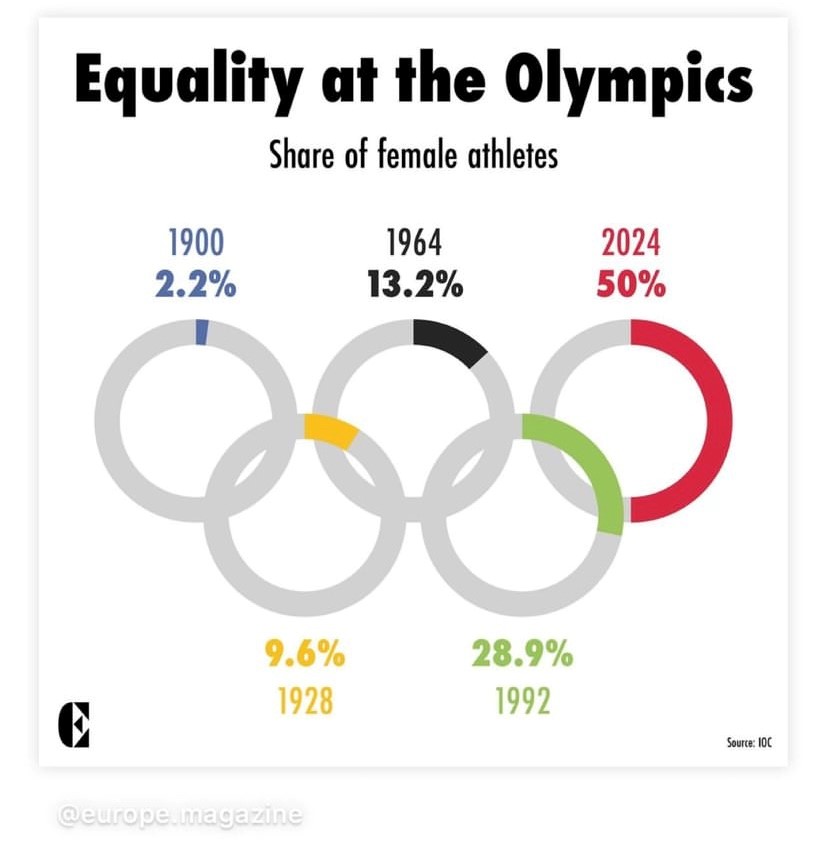![]()
Mongoose Group
The Manufactory
1 Alfred Mews
London
United Kingdom
W1T 7AA
Registered in the England and Wales.
Company No. 09527711
Popular links
- © 2025 Mongoose Ltd. All rights reserved.
- Cookies & privacy policy
- Site map
- Employee Privacy Notice

The road to gender parity at the Olympics has been a long time coming. While the modern Olympics began in 1896, no women competed until the 1900 Paris Olympics, and only in a handful of sports. Over the decades, the inclusion of women has gradually increased, with significant strides such as the introduction of women’s athletics in 1928 and the first female boxing event in 2012.
The International Olympic Committee (IOC) has played a critical role in promoting gender equality. Initiatives like Agenda 2020, which aimed to increase female participation, and the introduction of mixed-gender events have been instrumental in reaching this milestone. The equal representation at Paris 2024 is the culmination of these efforts and sets a powerful precedent for future sporting events.
Achieving gender parity at the Paris 2024 Olympics is more than a symbolic milestone – a visible sign of a decade of hard work driving the following:
1. Inspiration and Empowerment: Equal representation inspires young girls worldwide to pursue sports and reverse the teenage drop-out trend. Interestingly, this week we’ve seen Knix and Megan Rapinoe release a campaign encouraging (and paying) athletes to talk about their periods in media interviews to break the societal taboo.
2. Increased Visibility: With more female athletes on the global stage, the visibility of women’s sports will increase and ultimately drive value and pay.
3. Role Models: Female Olympians serve as role models, demonstrating resilience and determination while performing on the world stage. For me, Simone Biles is one of the best role models, and is inspiring a younger generation of female athletes, championing self-advocacy and mental health.
The parity of athletes at the Paris 2024 Olympics will drive greater visibility of female athletes, their characters and their stories. Boosting athlete profiles will continue the rise in commercial value of female athletes. Ultimately leading to increased financial investment in women’s sports, from grassroots initiatives to professional leagues and diversify revenue distribution to more sports.
Enhanced visibility and media coverage will also create a positive feedback loop, drawing more fans, higher viewership, and, subsequently, more sponsorship. Female athletes often have dedicated and passionate fan bases, providing sponsors with a unique opportunity to reach consumers who might be underrepresented in traditional sports marketing.
The number of sponsorship deals in women’s professional sports has increased more than 22% year-over-year (YoY).
Several brands are already recognising the value of supporting women’s sport and athletes, having seen positive returns on their efforts. The introduction of childcare in the Athlete Village is a genius move by Allyson Felix and Pampers/P&G – alleviating pressures on mothers who are competing on the biggest stage.
Worldwide Olympic sponsor, Bridgestone have ensured gender parity in their athlete endorsements. Here in the UK, they support Charlotte Worthington in her BMX campaign as well as decorated swimmer Adam Peaty. On the surface this seems like an obvious move to support men and women equally, but all too often brands miss the mark.
The Paris 2024 Olympics continues the long road towards gender equality in sports. Hopefully the Olympic phenomenon, coupled with the female characters and stories that emerge, will continue to highlight to brands and investors the value of supporting female athletes.
Laura Owen, COO
Got a question, enquiry or fancy joining Team Mongoose? We’re always looking for new additions to the Mongoose burrow. Are you a hungry & motivated sales person or passionate & energetic activation specialist? We’d love to hear from you.
![]()
Mongoose Group
The Manufactory
1 Alfred Mews
London
United Kingdom
W1T 7AA
Registered in the England and Wales.
Company No. 09527711
Mmm, Cookies. We love cookies, so much so we use them on our site to help us improve our users experience. By clicking Agree you consent to our cookies. To find out more visit out Cookies Policy.
AGREE